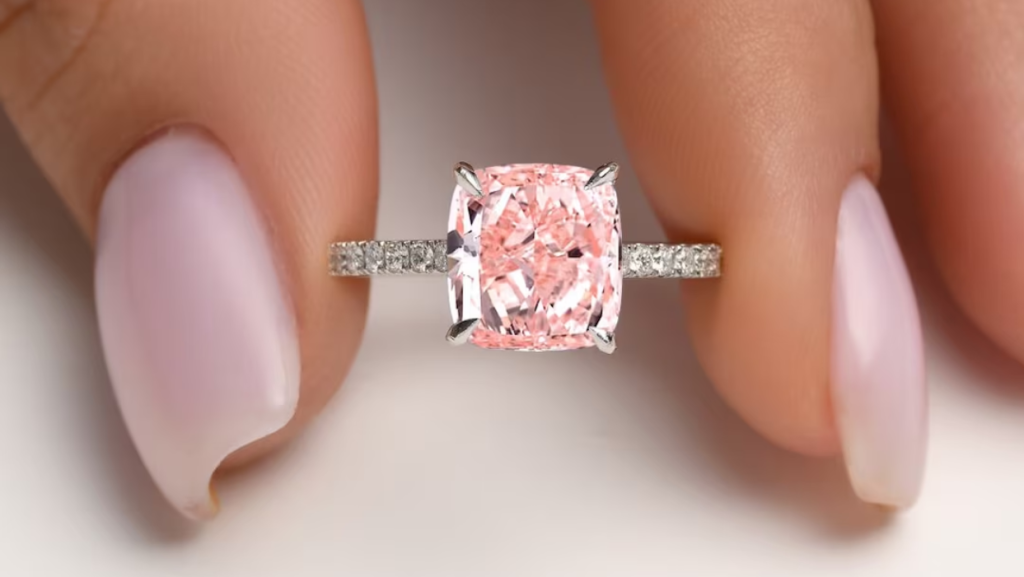Understanding the Diamond Myth
Diamonds. The mere mention of the word evokes thoughts of luxury, wealth, and rarity. We’re taught to believe that diamonds are rare, precious stones—so rare that they hold an almost mystical value. But what if I told you that mined diamonds aren’t nearly as rare as we’ve been led to believe? In fact, the entire diamond industry has carefully crafted a narrative around diamond scarcity to maintain high prices.
It’s time to bust this myth wide open and explore why mined diamonds are not rare as rare as we think.
The Truth About Diamond Rarity
To understand why diamonds are not as rare as people think, it’s important to first grasp how diamonds are formed and how they end up in our jewelry boxes. While it’s true that diamonds are formed deep within the Earth under extreme pressure and temperature, they aren’t exactly as rare as the industry suggests.
How Diamonds Are Formed
Diamonds are carbon atoms that have crystallized under high-pressure conditions deep beneath the Earth’s surface. The process takes millions, even billions, of years. But the conditions for diamond formation—extreme heat and pressure—aren’t all that rare.
In fact, diamonds can form in multiple places around the world, and they don’t take centuries to form. With modern technology, diamonds are being mined at a much faster rate than nature could ever produce them.
Diamond Deposits Around the World
While diamonds were once found in just a handful of locations, today, they’re discovered all over the globe. The diamond industry’s vast network spans continents. From South Africa’s mines to Russia’s Siberian fields, diamond deposits are not a scarce phenomenon. And it’s not just about the raw supply; technological advances make it easier than ever to locate and extract these gems.
Major Diamond-Producing Countries
The top diamond-producing countries are quite surprising if you’ve always thought of diamonds as rare treasures from exotic, faraway lands. Russia, Botswana, Canada, and Australia dominate the global supply. And this is just the tip of the iceberg. New discoveries are constantly being made, proving that diamond sources are abundant.
The Diamond Supply vs. Demand
Diamonds are often marketed as a symbol of exclusivity, but is that really true? The demand for diamonds has been artificially inflated through clever marketing strategies. The perceived rarity of diamonds isn’t as much about how rare they are in nature, but how they’re marketed to the public.
The Role of Marketing in Perceived Rarity
The “diamonds are forever” campaign, launched by De Beers in the 1940s, is one of the most iconic and successful marketing campaigns in history. It played a crucial role in shaping the public’s perception of diamonds as rare and valuable. In reality, diamonds are abundant, but their perceived rarity is a result of strategic marketing and media influence.
De Beers and other industry giants control the supply and distribution of diamonds, making them appear rare by limiting the number available on the market.
The De Beers Monopoly and Its Impact
For most of the 20th century, De Beers controlled about 80% of the world’s diamond production. This monopoly allowed them to dictate prices and create an illusion of rarity. While the market has since become more competitive, De Beers still holds significant power, and their ability to influence diamond prices remains strong.
Technological Advancements in Diamond Mining
Advancements in technology have revolutionized diamond mining, making it possible to extract diamonds more efficiently and in larger quantities. This has drastically reduced the cost of extraction and made diamonds less of a rare commodity.
Modern Mining Techniques
From high-tech machinery to drones, modern mining operations can locate and extract diamonds faster than ever before. Methods like open-pit mining, underground mining, and even ocean-based diamond mining have all contributed to an increase in diamond production.
Increasing Diamond Discovery Rates
Thanks to more sophisticated tools and techniques, diamond discovery rates are higher than ever. Geologists are using advanced imaging techniques and computer models to predict where new diamond deposits are located, leading to more successful mining operations and an even greater supply of diamonds.
The Impact of Synthetic Diamonds
Another factor contributing to the overabundance of diamonds is the rise of synthetic diamonds. These lab-grown diamonds are chemically identical to mined diamonds, but they can be produced in weeks rather than millions of years.
Are Lab-Grown Diamonds the Future?
Lab-grown diamonds are becoming increasingly popular due to their ethical and environmental benefits. These diamonds are created using advanced technology that mimics the natural diamond-forming process. And the best part? They’re just as stunning and valuable as mined diamonds, but they don’t have the same environmental and human costs associated with traditional diamond mining.
Comparing Mined and Lab-Grown Diamonds
While there are some differences in the process of their creation, the end result is virtually indistinguishable. Lab-grown diamonds are made in a controlled environment, ensuring fewer impurities and a more consistent product. As technology continues to improve, these diamonds could eventually replace mined diamonds in the market.
The Economic and Environmental Costs of Mining
Diamond mining comes with a hefty price tag—one that doesn’t always reflect the rarity or ethical considerations surrounding the gem.
Ethical Concerns with Diamond Mining
The term “blood diamonds” refers to diamonds mined in war zones or under conditions that involve child labor, exploitation, and violence. Many mined diamonds come from regions where human rights are severely compromised, leading consumers to question whether purchasing lab made diamonds from these sources is ethical.
Environmental Degradation
Diamond mining isn’t just harmful to people; it’s damaging to the environment as well. Mining operations often lead to deforestation, water contamination, and habitat destruction. The environmental cost of extracting diamonds is huge and should not be overlooked in the conversation about diamond rarity.
Why People Continue to Buy Mined Diamonds
Despite the availability of synthetic diamonds and the knowledge of environmental and ethical issues, mined diamonds continue to hold a special place in many people’s hearts.
The Emotional and Cultural Value
Diamonds are more than just a commodity; they carry deep emotional and cultural significance. For centuries, diamonds have been symbols of love, commitment, and prestige. Their association with special occasions like engagements and weddings has cemented their place in our culture, regardless of their actual rarity.
Conclusion
So, are mined diamonds rare? Not really. While their formation process is long and complex, their abundance in the Earth’s crust and the efficiency of modern mining methods have made diamonds more available than we realize. The rarity of diamonds is, in fact, more a marketing construct than a geological reality.




